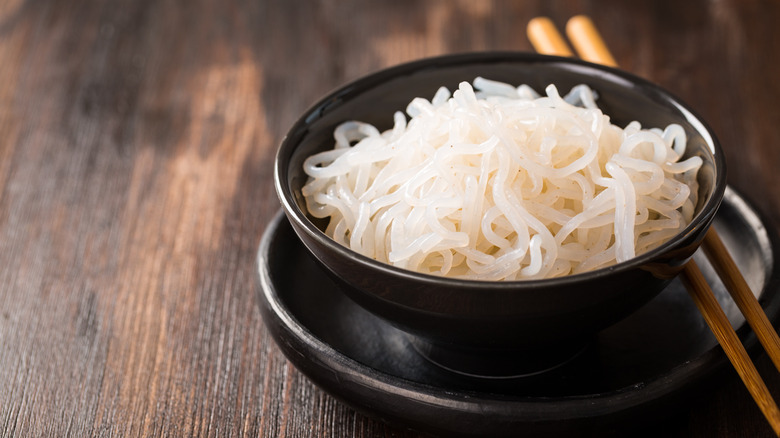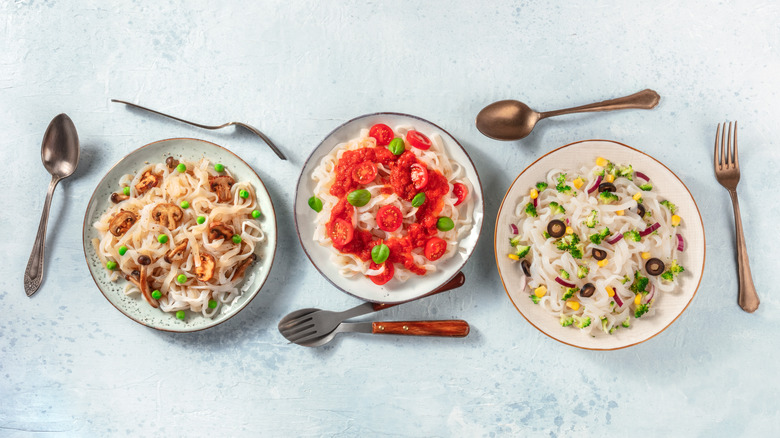Shirataki: The Japanese Noodles You Should Know About
Noodles are incredibly versatile ingredients. You can enjoy them in countless dishes, from pastas and stir fries, to soups, salads, and more. Not only do they come in different sizes and shapes, but they can also be made from many different ingredients While many popular noodles, including most of your favorite pasta and ramen, are made from wheat, plenty of other options exist, including low-carb and gluten-free alternatives, like rice noodles, glass noodles from sweet potato starch or mung bean, buckwheat soba noodles, tapioca noodles, and even kelp seaweed noodles.
One such alternative noodle, which you may not be aware of, is shirataki noodles — "shirataki" means "white waterfall" in Japanese, which is an apt description for these long, white, and translucent noodles. In recent years, shirataki noodles have become increasingly popular outside of Japan. They can now be found in many supermarkets in the US, where they are often referred to as "miracle noodles."
Low calorie, low carb, and full of health benefits
Shirataki noodles are made up of 97% water and 3% glucomannan, a highly viscous soluble fiber from the tropical konjac plant, a type of yam. Because they are wheat, gluten, and egg free, and in some cases, also low FODMAP, they are ideal for people with various dietary restrictions, notes Medical News Today. They are also extremely low in calories and carbs: 100 grams contain less than 10 calories and 3 grams of carbs, per the USDA.
The fibers in shirataki noodles help you feel fuller for longer, and can help with weight loss and improving digestion and bowel function. Glucomannan has a low glycemic index and can help lower blood sugar, insulin, and cholesterol levels. Glucomannan also acts as a prebiotic, and provides healthy fuel for your gut flora, which may help your body fight inflammation and increase immune function, according to Healthline.
Shirataki noodles come in shapes like spaghetti, angel hair, and fettucine, and are available dry or in water, which may have a somewhat fishy smell. Drain and rinse the noodles under cold water, boil them in water with a little bit of salt, or saute them dry in a non-stick pan to remove any lingering odor. Afterwards, simply prepare and add them to your favorite recipes containing noodles.

